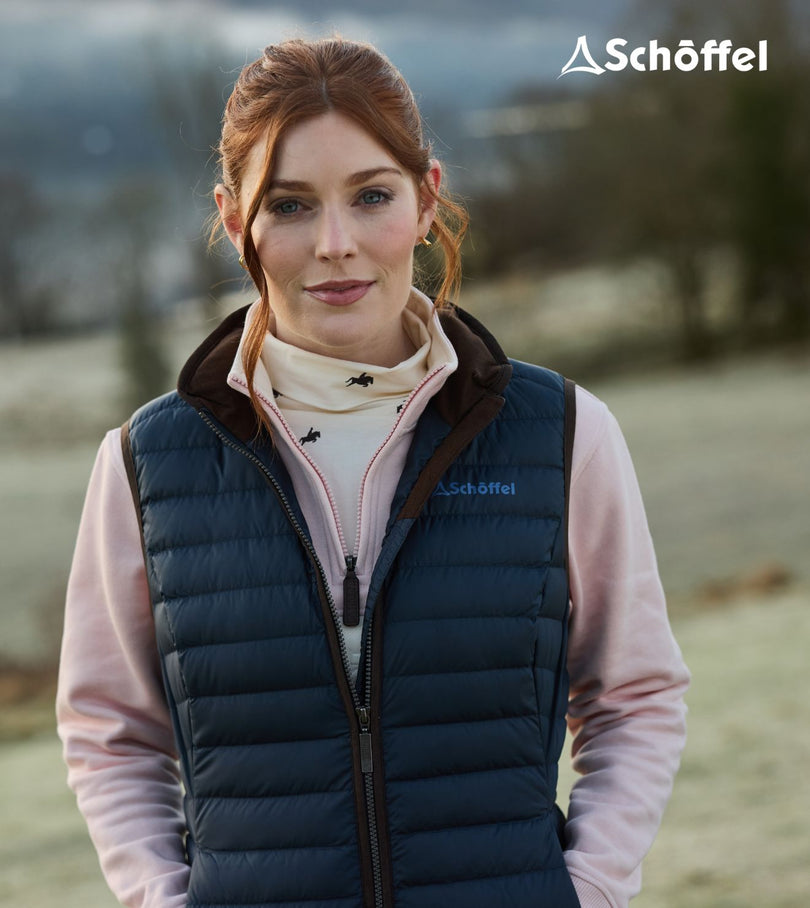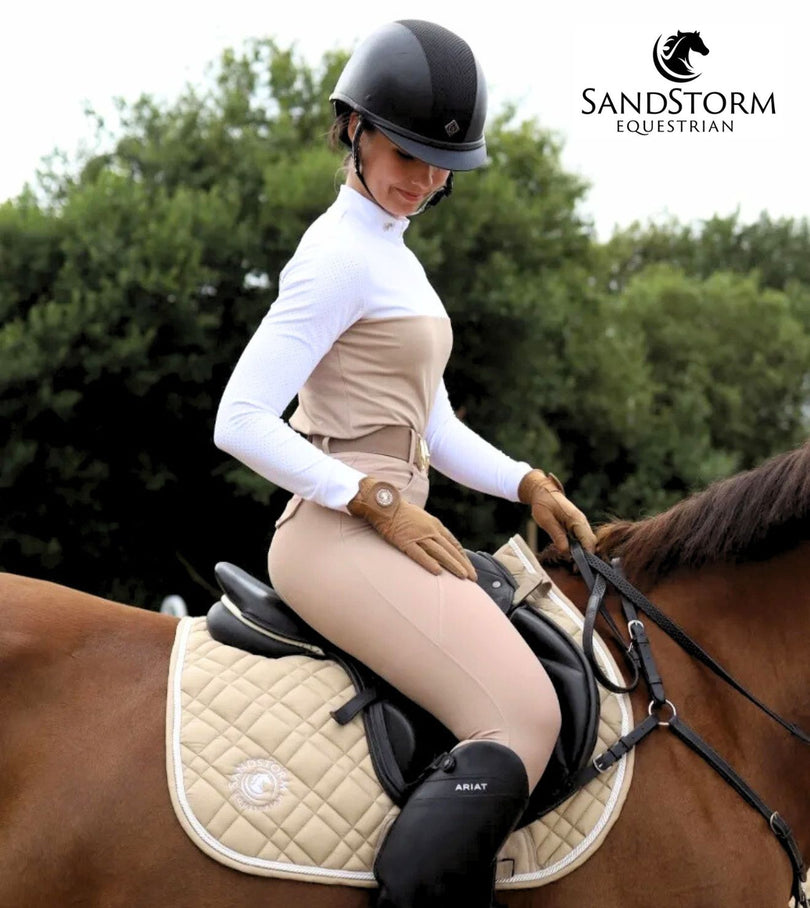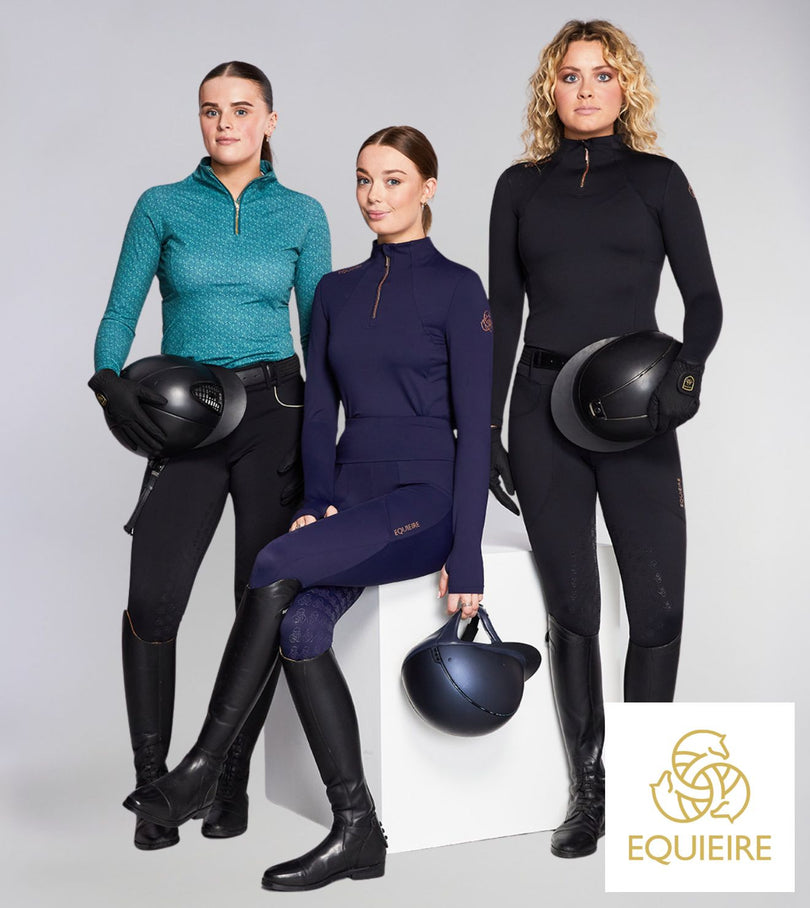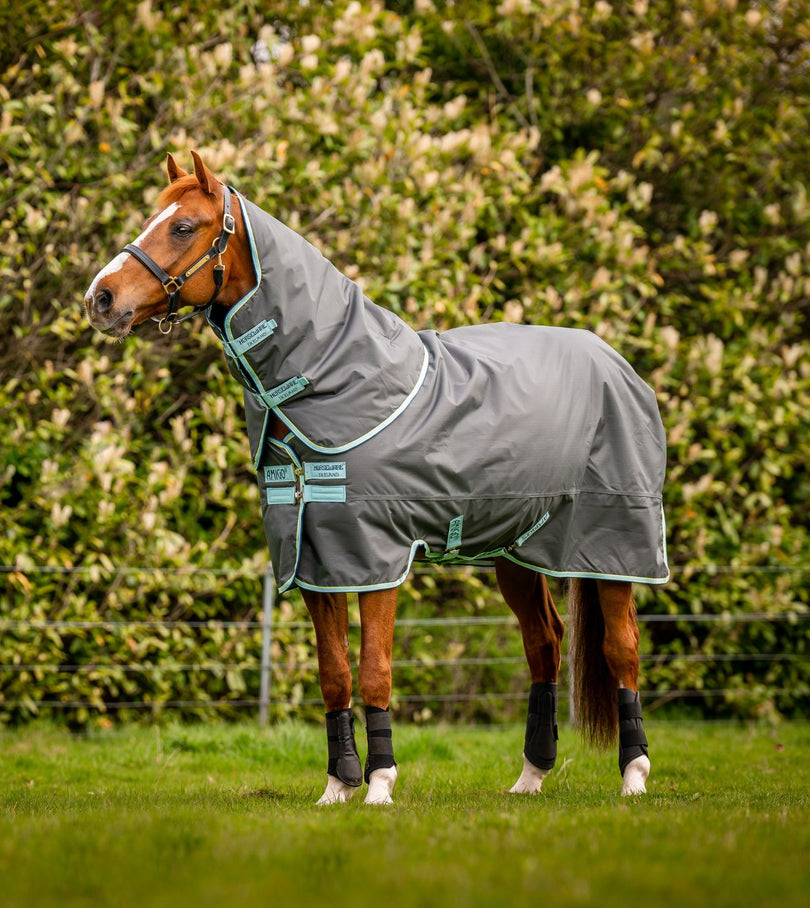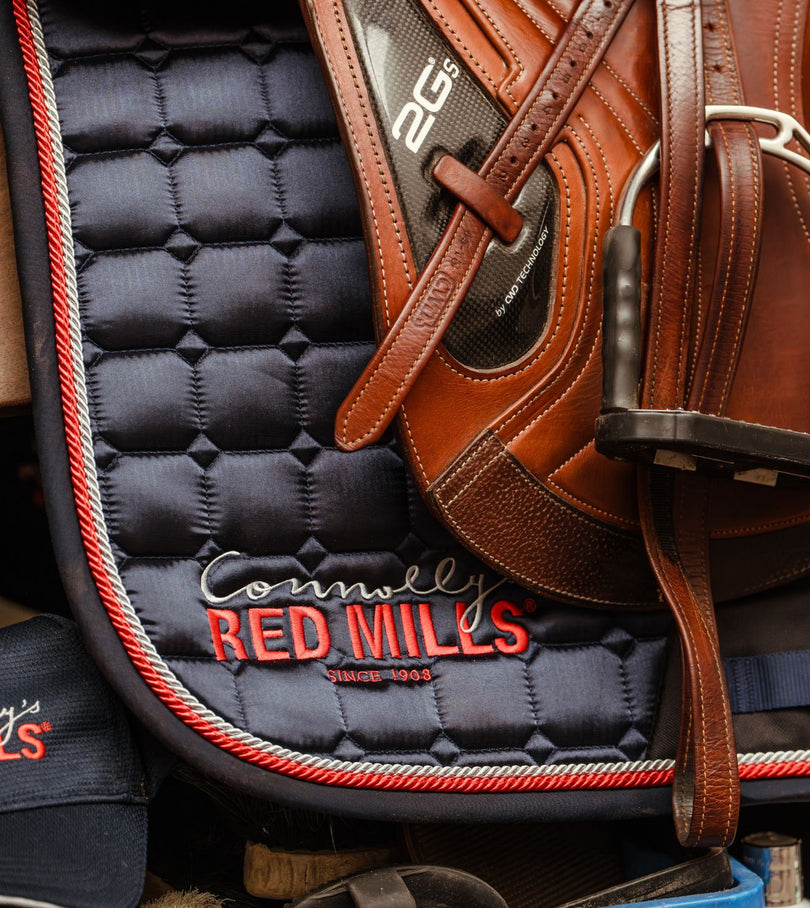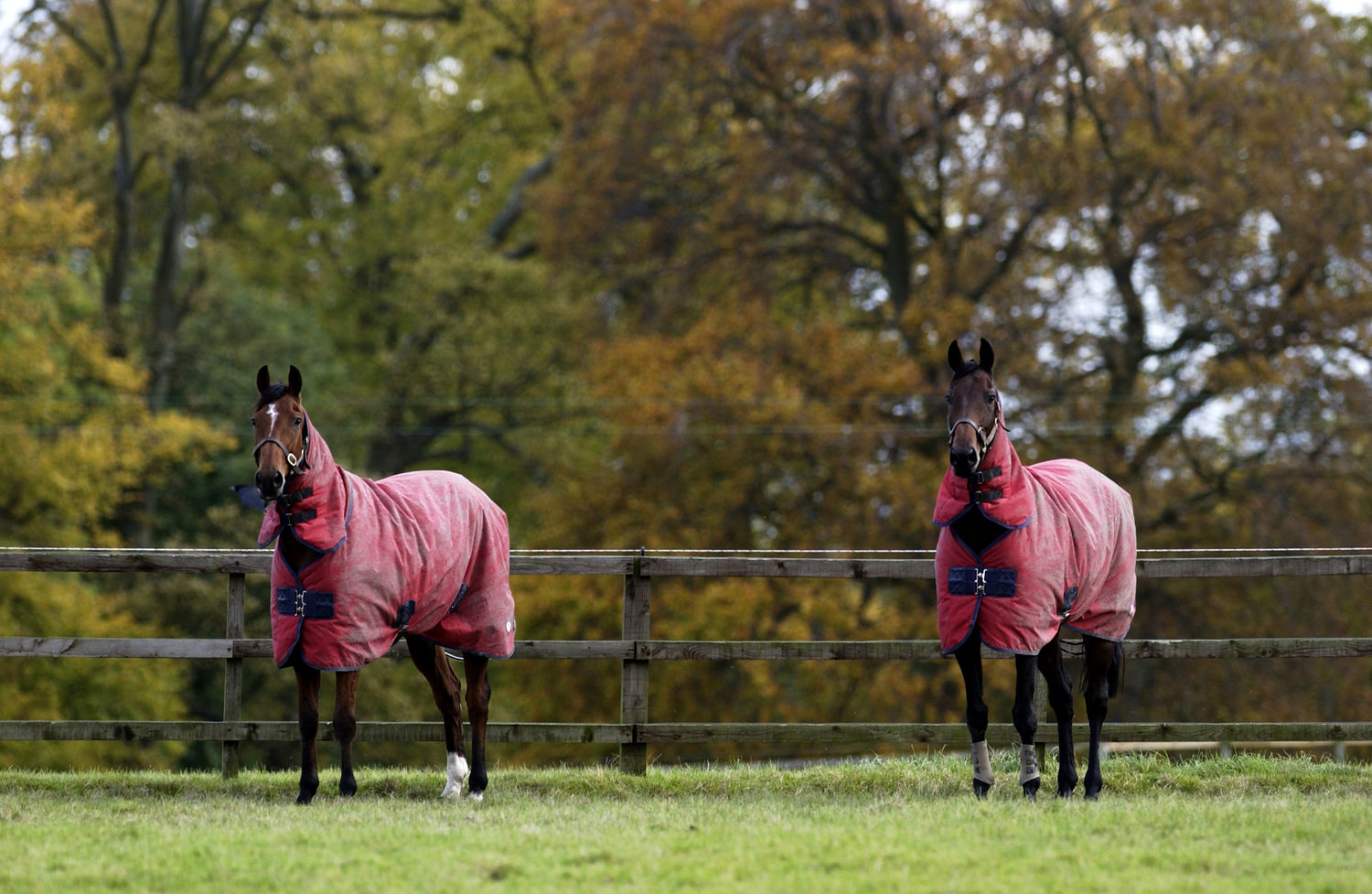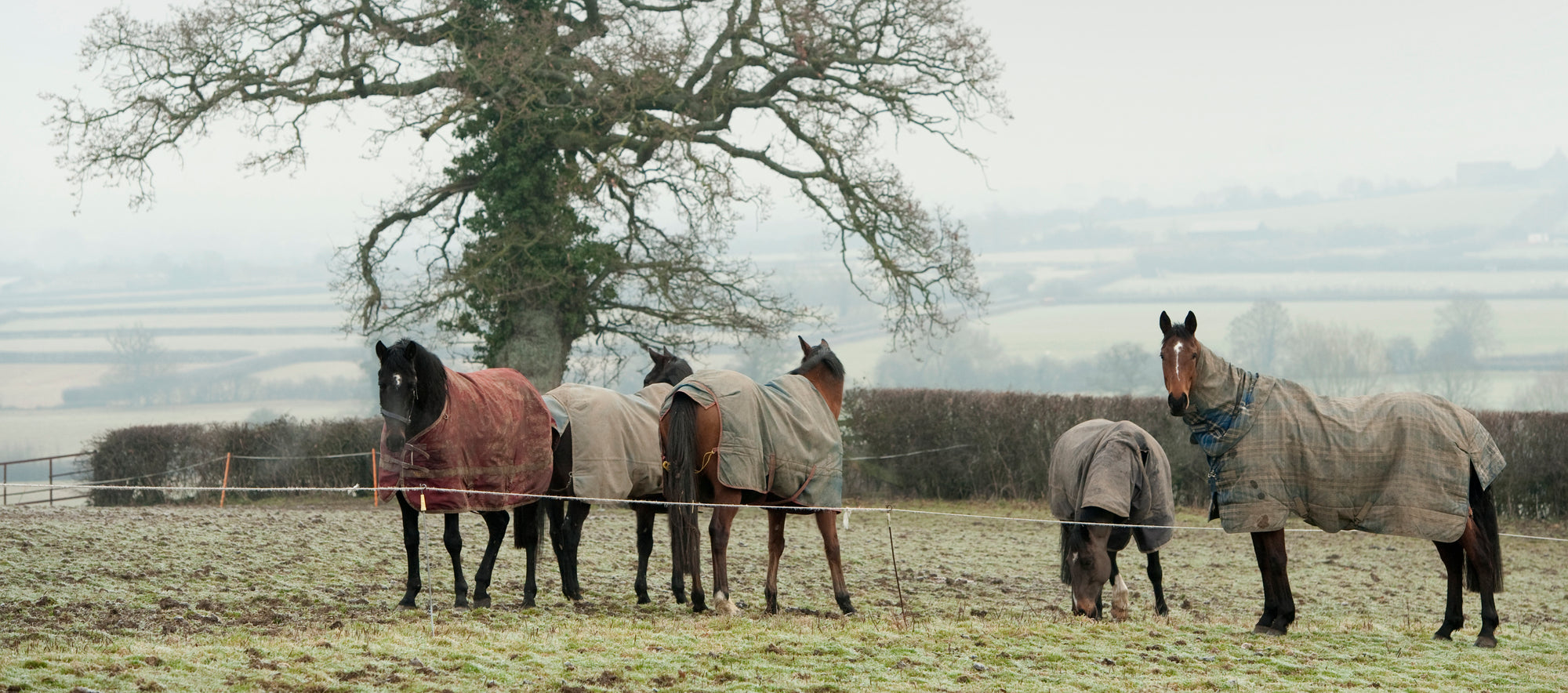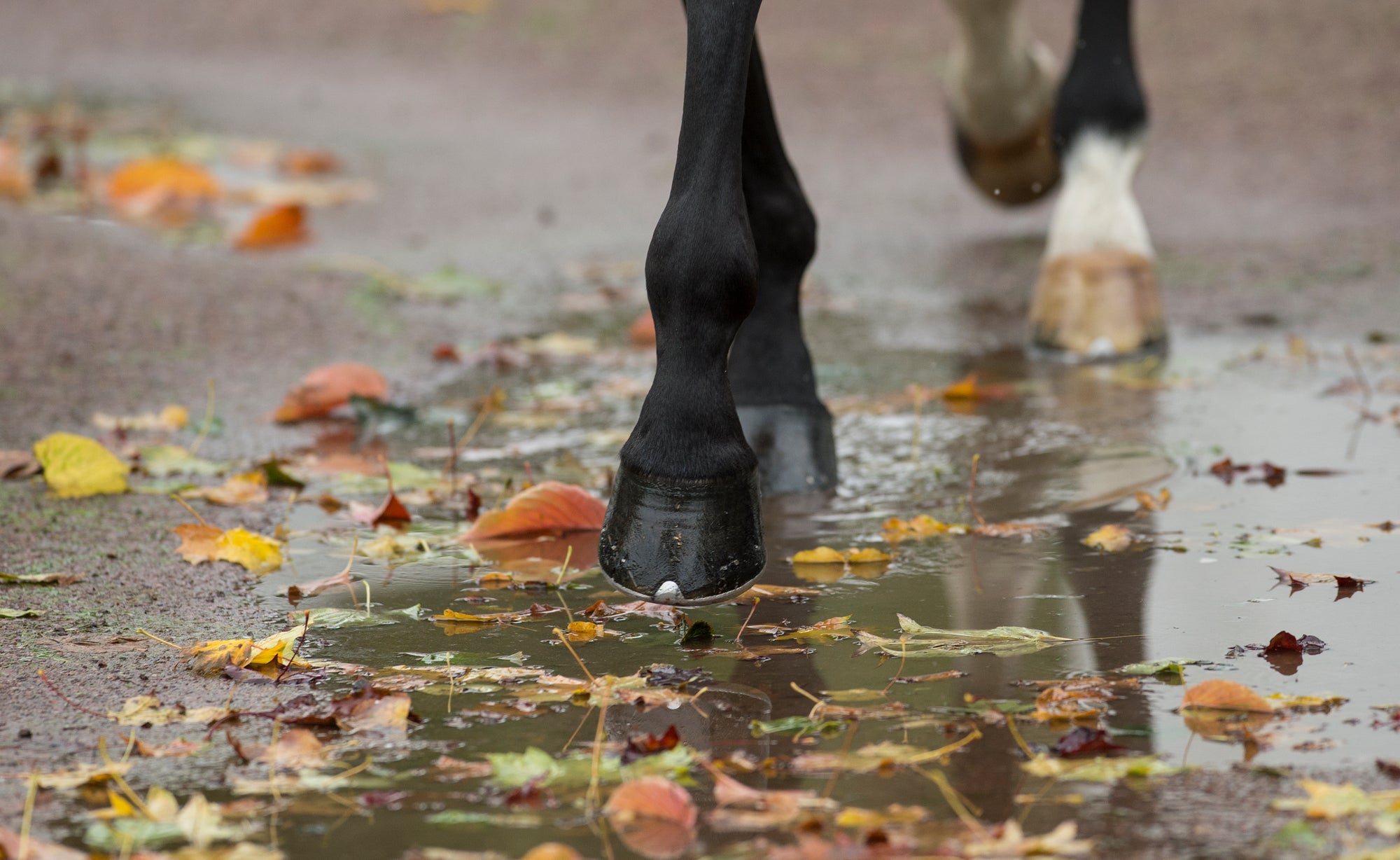The dark evenings, cold weather and wet conditions means caring for our horses is more challenging and takes a little extra effort through the winter. Many horses have different management routines through the winter, such as increased time in the stable, less exercise and a change in diet. It is important to remember some key points to help keep our horses in top shape over the coming months.
Keeping Warm
Horses and ponies grow an extra layer of hair in the autumn, which is extremely effective at keeping the elements out and body heat in. It is naturally coated with waterproof oils, which act as a barrier against rain, snow and harsh winds. Horses that are turned out in the winter are most likely to end up covered in mud, but too much grooming is not helpful as it removes some of the oils from the coat, making it much less effective in its waterproofing role. When preparing horses for winter and planning to compete over the winter months, you will need to consider rugging.

Choosing whether to rug your horse or pony depends on several factors, for example, horses that are prone to weight loss, have a low body condition score (BCS), have no shelter or are clipped will need rugs. If you choose to rug your horse, be sure to choose a rug of suitable weight. A thick haired unclipped animal may find a heavy-weight rug uncomfortable should the weather suddenly become warmer. Rugs should be removed daily to check your horses body condition and to check for any skin issues. Check Rugs available in our store.
Water
As the weather gets colder horses will often reduce their water intake. Combined with a drier diet (from less grass and more forage) this can lead to an increased risk of impaction colic. Your horse’s water source needs to be kept free from ice – so stock up on the rubber gloves and get prepared for breaking and removing those ice sheets daily!
Feed and Forage
If your horse is stabled a lot of the time they will require a plentiful supply of forage (i.e. hay or haylage) to help satisfy their appetite, avoid boredom and ensure their digestive system remains healthy. If your horse is living out it will likely also need supplemented forage to compensate for the reduction in grass quality and quantity during the winter. Feeding forage will also help to keep your horse warm as the microbes and bacteria in the horse’s hind-gut produces heat when fermenting forage.
Ideally, your horse would have ad lib hay or haylage (i.e. as much as they will eat). However, if your horse is a “good-doer” feeding good quality ad lib forage may result in excessive weight gain. In these cases, it’s important not to overly restrict forage intake as this can increase the risk of problems such as colic, gastric ulcers and oral stereotypies. Instead choose a late-cut variety of hay and soak it for 12 hours to further reduce its calorie and sugar content. If you find that you are still struggling with your horse’s weight, forage intake can be restricted slightly (i.e. 1.5% of bodyweight or approximately 7.5-8 kg of hay/day for a 500kg horse). Aim to feed a small hay net several times throughout the day and last thing at night. Double netting, using small holed hay nets, can also be a handy tactic to slow down quick eaters.
The amount of hard-feed your horse needs during the winter will depend on their weight, condition and workload. For example, a hunter in hard work will typically require significantly higher levels of hard-feed compared to a horse that’s only ridden at weekends.

If your horse is a “good-doer” winter can be the ideal time to allow their condition to drop off naturally, meaning that they can safely gain a little weight the following spring. A good-doer’s calorie requirement may be met by forage alone, but feeding a balancer such as Connolly’s RED MILLS PerformaCare Balancer will to ensure your horse receives optimal levels of all the essential vitamins and minerals, necessary for overall health. An alternative to feeding a balancer to a good-doer on a forage-based diet is the use of a nutrient dense supplement. Foran Equine Chevinal is a highly palatable liquid which will provide vitamins, minerals, and essential amino acids in each dose.
Horses that tend to lose weight over the winter can be equally challenging to feed. Regularly weighing and assessing your horse’s BCS will help you to spot the signs of weight loss early. Before making changes to your feeding programme, it’s important to eliminate other possible causes of weight loss such as a parasitic burden, poor dental condition or equine gastric ulcer syndrome.
Like humans, horses gain weight by consuming more calories than they use. Therefore, when selecting a feed for weight gain one of the most important factors to consider is its energy (calorie) content, which is measured as mega joules of digestible energy per kilogram of feed (MJ/ kg DE) – the higher the number, the more calories it contains. Typically, feeds marketed at promoting condition, such as Conditioning 14 Mix, contain around 12-13.5 MJ/kg DE.
The most calorific ingredient is oil, which provides approximately 2.5 more calories than cereals; conditioning feeds tend to have a high oil content (approx 5.5-8%). Oil can also be ‘top-dressed’ onto a feed such as Foran Equine’s Kentucky Karron Oil. If feeding extra oil you should check the amount fed with a Nutritionist, as adding too much can result in other nutrient issues. You can find out more about feeding for condition here.
Turnout
One of the biggest issues faced by owners while preparing horses for winter is being able to maintain turnout during the colder months. Mud fever causes scabs and matting of the hairs over the legs, especially the fetlocks and pasterns as they are the areas that get most exposed to mud. The bacteria can live in the soil for years and anytime your horse has a small defect in its skin it can penetrate it, multiply and set up an infection. It is more commonly seen on horses with white legs due to the pink pigmented skin being more sensitive.

Carr & Day & Martin Gallop Medicated Shampoo is an all year round shampoo that can be used to help control and soothe skin problems and is a must for mud fever. With the antibacterial and antifungal properties of Triclosan, combined with the antiseptic properties of Chlorhexidene gluconate, it is an excellent skin cleanser and wound rinse. The soothing and conditioning values of panthenol, aloe vera, jojoba, rosemary, tea tree, origanum and pomegranate leave noticeably softer hair and a shiny coat and also help to lift stubborn scabs. Gallop Medicated Shampoo is ideal for dry, scurfy, itchy, damaged or sensitive skin and can be applied directly to a wet coat or added to a bucket of water for a medicated rinse.
The horse’s legs can be protected against mud rash by using Foran Equine MRS Ointment. It maintains a barrier in wet muddy conditions and prevents bacteria gaining access to damaged skin and contains the natural healing antiseptic, tea tree oil, to aid skin restoration.


